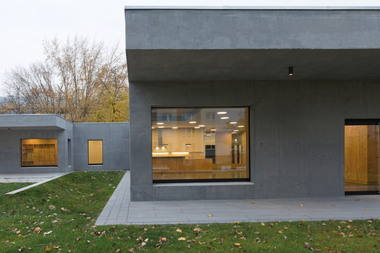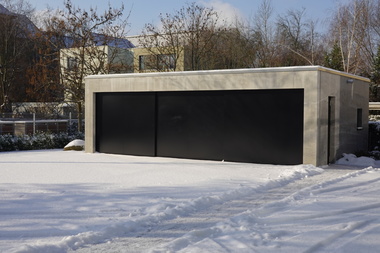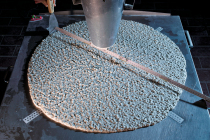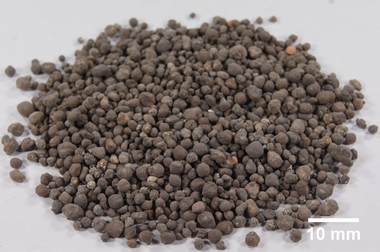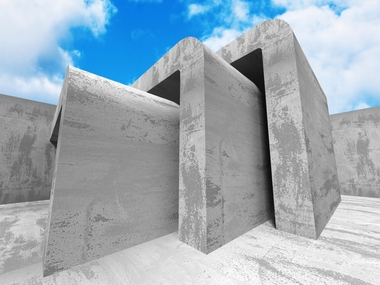II.) Material-appropriate designing and building
Infra-lightweight concrete is of such lightweight and thus thermal insulating, so that this concrete enables the construction of architectural concrete buildings which meet today’s structural physical requirements, even without any need for additional insulating material. Such building structures with exterior walls made from virtually only one mineral material – load-bearing thermal insulation – allow for greater freedom of design because the structural design details are drastically simplified. Due to the porous material, they provide for a pleasant indoor climate, and they can be re-used at the end of their life cycle because they are not permanently bonded with other materials. Infra-lightweight concrete achieves mean compressive strengths of up to flcm = 13 MPa, which, in compliance with the conformity criteria, is corresponding to concrete LC8/9 and allows multi-story buildings. At the same time, it is possible to reach thermal conductivity values of between l10°,tr = 0.14 and
0.19 W/(m K) depending on the strength, thus complying with the German Energy Savings Regulation for buildings at a wall thickness of approx. 50 – 60 cm proved by the “building certificate”. Technische Universität Berlin began the research on infra-lightweight concrete with first tests in 2007 and the construction of a single-family house as a first reference building. Since then the development of infra-lightweight concrete has successively been advanced. In the meantime, several mix designs using different dry densities are available for a standardized production of infra-lightweight concrete. Present research activities currently concentrate on several third-party funded projects, sponsored by DFG, BBSR and BMBF, for both to conduct application-oriented research and fundamental research. In order to convey the hitherto existing findings on infra-lightweight concrete from research to potential users in a practice-oriented manner, a manual on infra-lightweight is presently written which will presumably be published in 2018.




